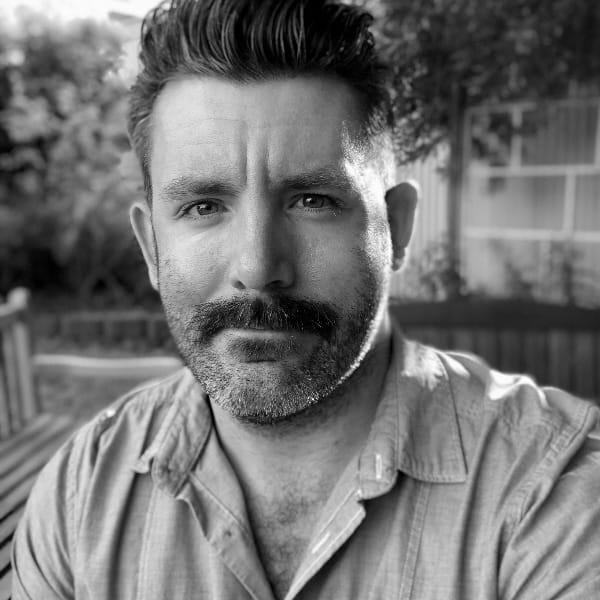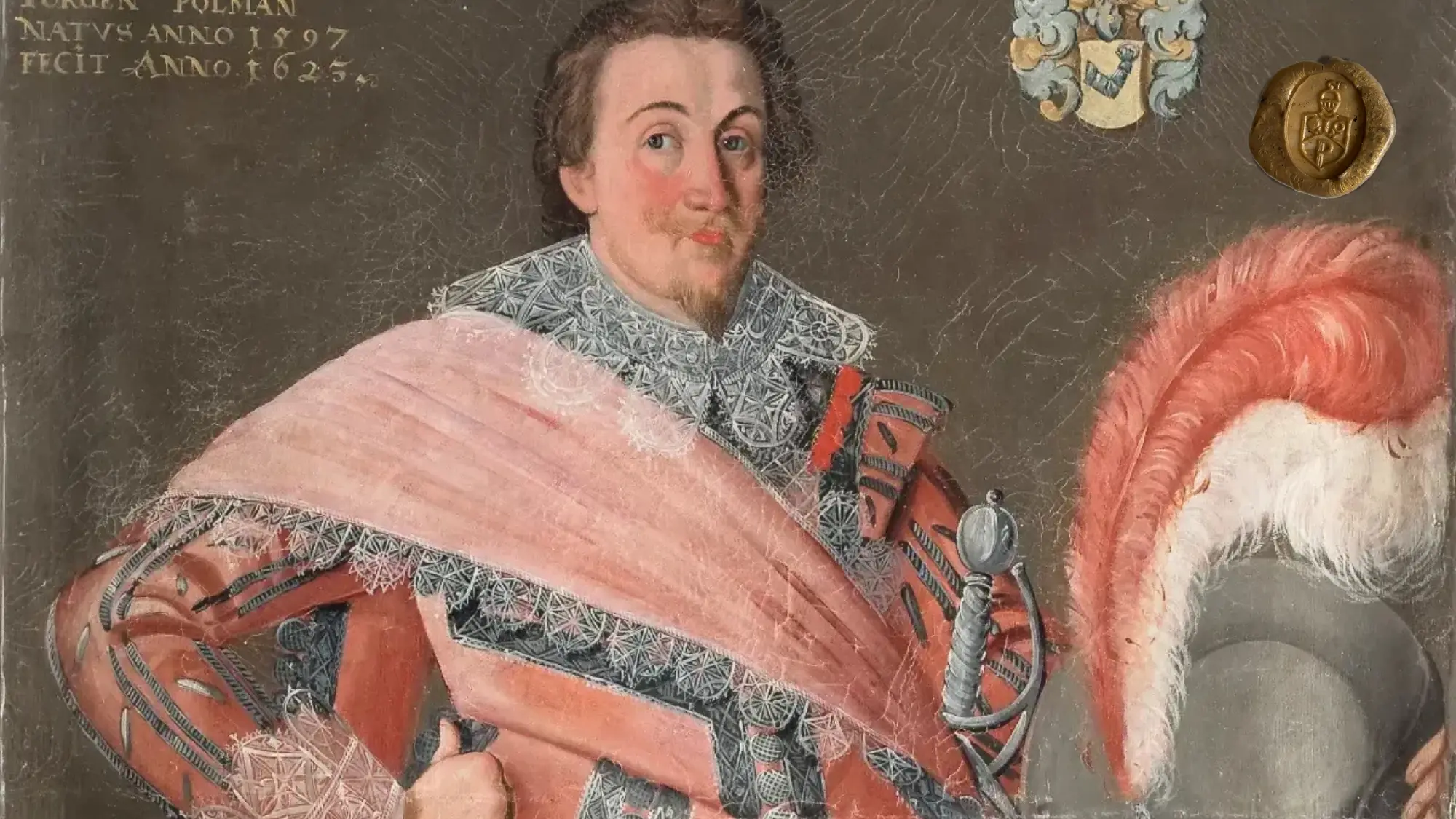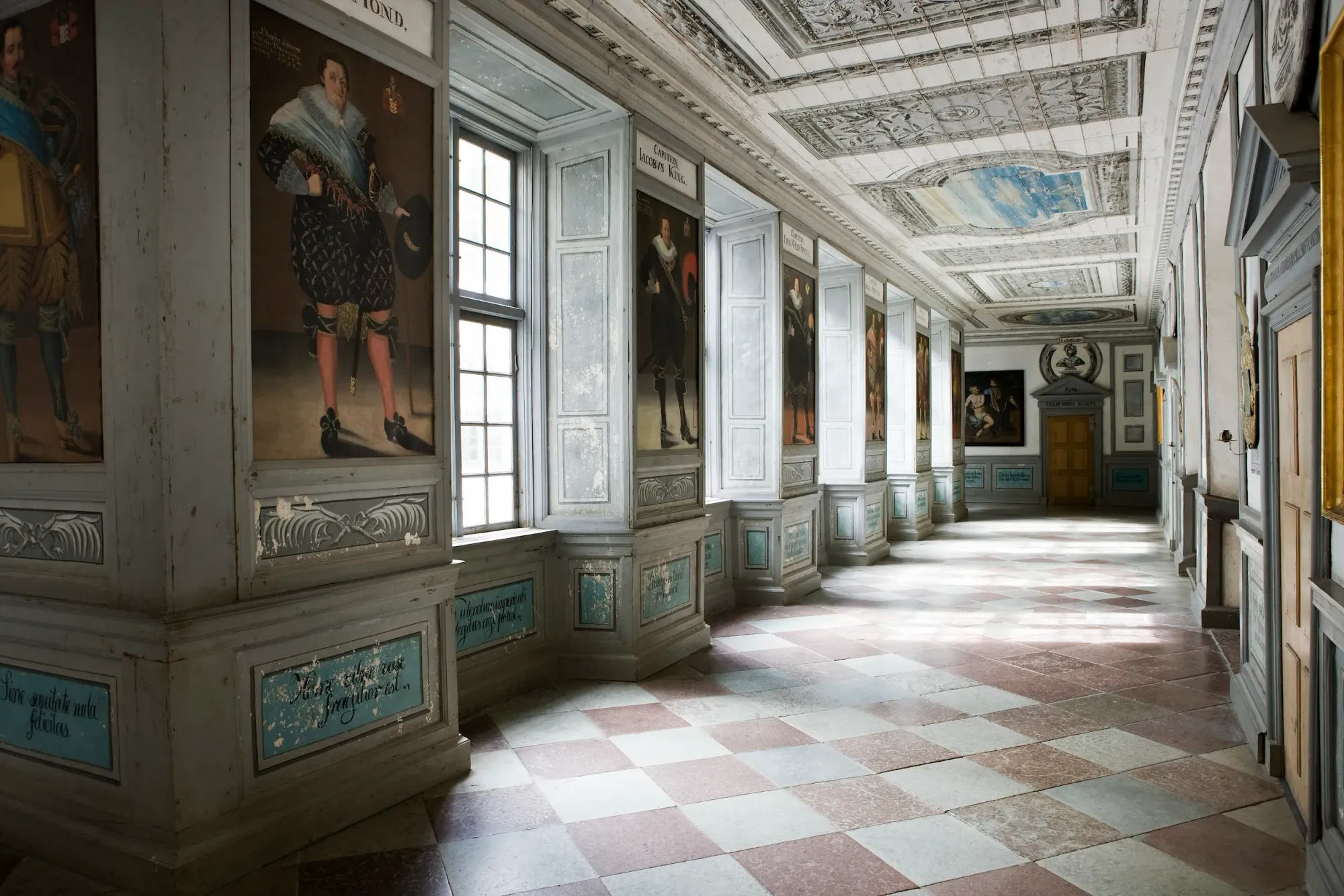The Portraits at Skokloster
On the walls of the corridors at Skokloster Castle, there are 20 paintings showing members of Herman Wrangel’s officers’ corps. As you walk upstairs to the first floor of Skokloster, these officer portraits are the first thing to greet you. But how did these unusual portraits come about?
In 1623, the Field Marshal Herman Wrangel received orders to protect Kalmar from a potential Polish invasion. He was joined by Georg Günther Kräill von Bemeberg, who was tasked with strengthening the city’s fortifications. Soon after, the most courageous soldiers arrived as reinforcements to defend Kalmar, together with their elite supervisors, the famous “model officers” from the siege of Riga.[[1]] But the enemy never showed up:
… The days dragged monotonously by. For everyone, that is, except Kräill, who, upon the commission of Wrangel, made the most of this free time to devote himself to his great passion, painting. Five officers willingly agreed to pose before his easel: Otto von Scheiding, Jörgen Pålman, Johan Patkull, Carl Kimmel and Claude Gebhardt de Laval, whose life-size portraits persuaded the other fourteen comrades from Riga to present themselves at Kräill’s makeshift studio in the casemates of the castle of Kalmar.
-Daniel Rey, FMR International

In the end, Kräill painted 20 portraits of his comrades-in-arms and friends between summer and fall 1623 at Kalmar Castle.[[2]] The wielding of his paintbrush immortalised the officer’s achievements at the siege of Riga during the Thirty Years’ War.
The 20 portraits, including Herman Wrangel’s, are displayed together, creating a striking effect.[[3]] It is possible that Wrangel wanted to present the image of a commanding military force.[[4]] However, paintings were also a way to achieve immortality, and Wrangel did not have enough portraits from his own ancestors to decorate the old Skokloster home.[[5]] It is more likely that he commissioned these paintings to have a complete gallery to display in his residence:
He had them painted to decorate the walls of his residence at Skokloster […] maybe to follow the fashion set by Gustav I in the previous century, or under the influence of the commemorative fervour which had led all Swedes frenetically to immortalize the features of their ancestors. But Herman did not have enough illustrious ancestors to make up a whole gallery. At most, the field marshall owned a few nearest relatives of his three successive wives, aristocrats, it is true, but from the lesser nobility: his family tree suffered cruelly from an absence of forebears. That’s why he set about lining its walls with the painted canvases of himself, but also of important figures in the history of Skokloster, both his servants and the men of letters and scholars with whom he liked to surround himself, not to mention his loyal comrades-in-arms.
-Daniel Rey, FMR International
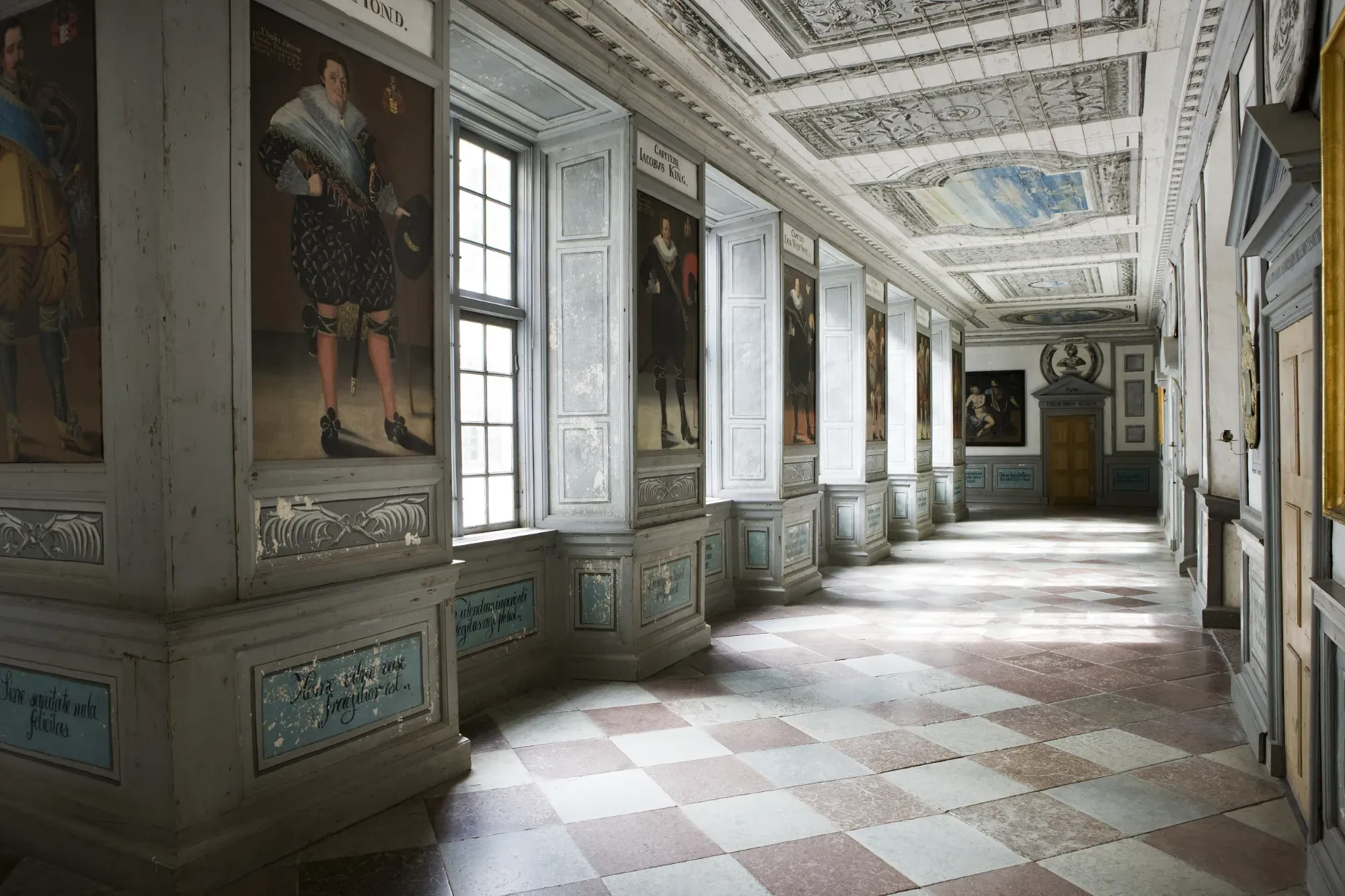
Regardless of his reason, the portraits he commissioned of his 20 officers are unparalleled and painted in full- and life-size. Herman Wrangel’s own portrait is located in the middle of the corridor, with the officers displayed to his left and right.[[6]]
The Age of Long Locks, Lace and Leather
The seventeenth century was the age of "long locks, lace and leather."[[7]] Prior to the 1620s, there was an emphasis on tall and slender looks. However, the silhouette in the 1620s to 1650s became rounder and broader, which was achieved by high-waisted robes, wide cuts, and large masses of fabric.[[8]]
For men, the outfit was defined by a high-waisted doublet with wide laps and a wide skirt, and very wide, knee-length bloomers and decorated with embroidery, which fell in loose folds around the thigh. Softer lace collars became fashionable during this period, sometimes covering the whole shoulders. Trousers were often tied with a bow at the knee. They wore high-heeled shoes decorated with roses.
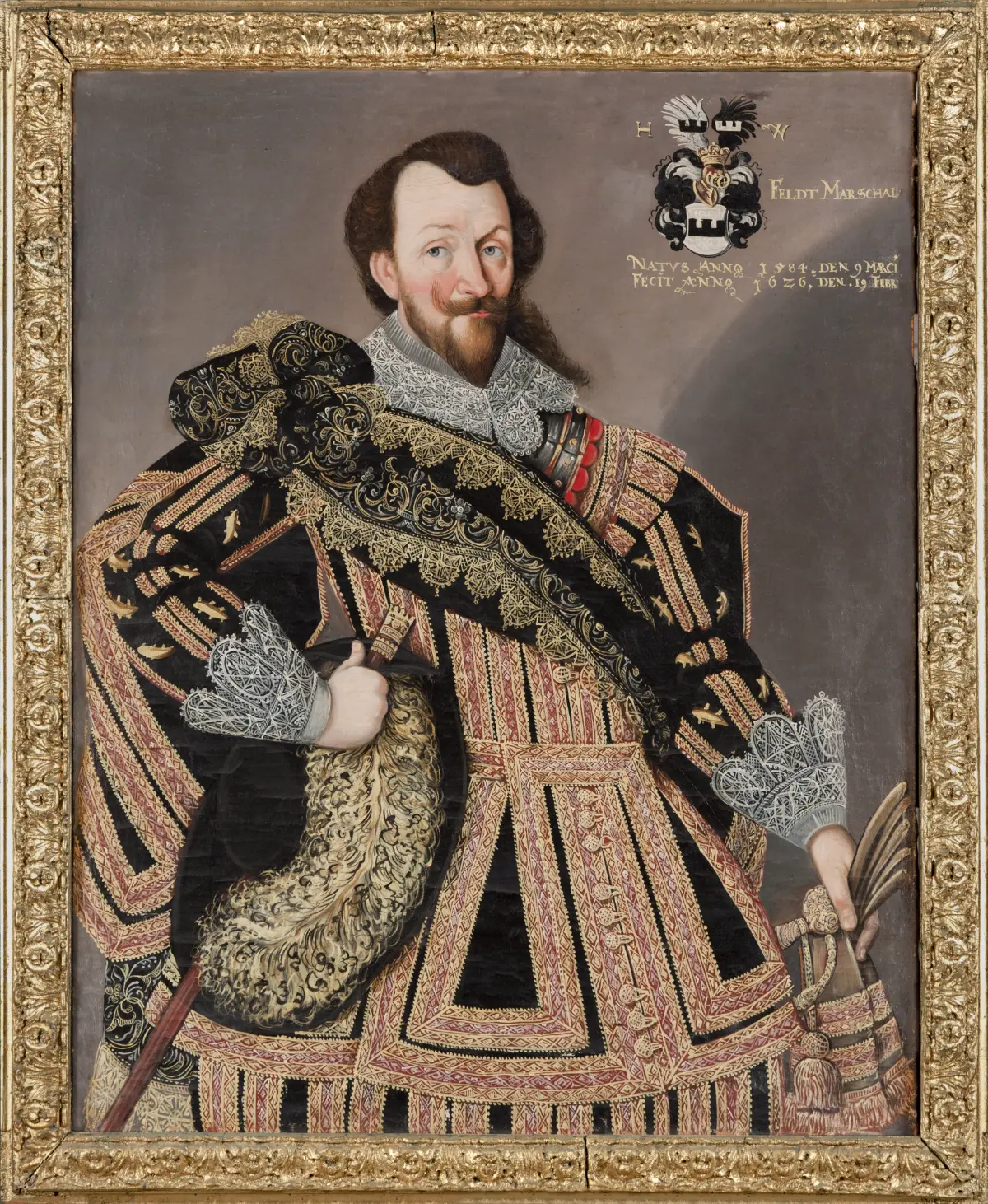
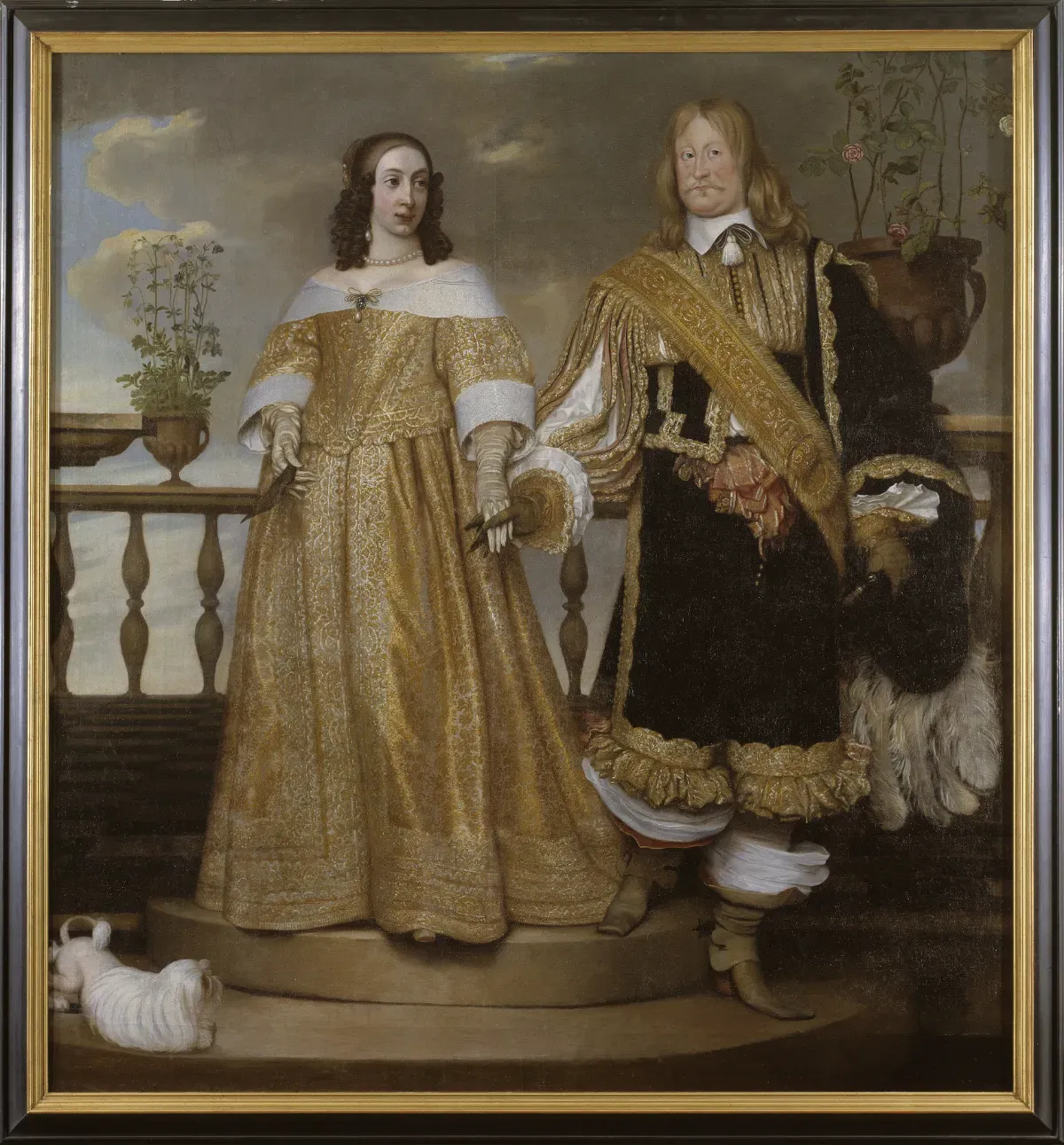
Fig. 3 - Georg Günther Kräill (1584-1641), Field Marshal Herman Wrangel (1584-1643), 1626, tempera on canvas. Image by Skoklosters slott/SHM (CC BY 4.0). Fig. 4 - Henrik Münnichhofen ( - 1664), Magnus Gabriel De la Gardie and Maria Euphrosyne of Pfalz-Zweibrücken, 1653, oil on canvas. Image by Linn Ahlgren/Nationalmuseum.
At the time of the Thirty Years’ War, European fashion was increasingly inspired by Paris, with more elegant and sophisticated clothing.[[9]] [[10]] By the 1670s, the first fashion reports began appearing in magazines, and engraved fashion posters also emerged. By the middle of the seventeenth century, Stockholm had become a hub for fashion, with shops selling the latest fashions.[[11]]
During this period, the consumption of the upper classes was particularly ostentatious. Noble families, having accumulated their wealth through many wars, built grand castles with magnificent furnishings and gardens. Some wealthy nobles found that one castle wasn’t enough, so they built several. This lavish spending extended to fashion, with clothes made of precious materials, and adorned with lace, beadwork, embroidery and plumes. The extravagance was so extreme that it even inspired a hymn about the dangers of pride:[[12]] [[13]]
Eij går så snart en måne om/
Som thet maneer nu senast kom
Medh nytt förbytas måste.
En man nu drager qwinno håår/
Een qwinna i främmand drägt hon går/
Ehwad det månde kosta
No sooner does a moon go round/
As the manner of dress now last came
With new must be replaced.
A man now wears a woman's hair/
A woman in a strange garment she goes/
Whatever it may cost
It wasn't just aristocratic women who spent lavishly on clothes. Fashion-conscious men also wanted to dress à la mode and they dressed themselves in as much finery. It was common for gentlemen to wear a lot of delicate lace, silk, bows and ribbons. Fabrics, flowers and accessories that might be seen as feminine today did not have the same feminine connotations in the seventeenth century. The social construction of gender and gender expression changed dramatically in the last four centuries. In her thesis on analyzing hymns of the seventeenth century, Sofia Hillborg[[14]] argues:
When Gustavus II Adolf's officers went to war dressed in pink silk, silver lace, sheer silk stockings, plumes, high-heeled shoes, and knee and shoe breeches, this was not seen as a sign of feminisation. Gender constructions and fashion have changed.
The portraits of captains, lieutenants, and colonels painted by Kraill provide us with a glimpse into Swedish fashion during the reign of King Gustavus Adolphus and the Great Power era. These officer portraits at Skokloster Castle reveal the early baroque fashion, which favoured colourful and flowery dress with a fondness for lace, bows, ribbons, and rosettes — even among the men.
Close-up of Captain Jöran Polman's Portrait
One of the officers in Herman Wrangel's regiment – Jöran Polman – captures the essence of fashion during the seventeenth century. Born in 1597 into the Baltic German family, he rose through the military ranks, serving as captain of the Kronoberg regiment and then promotions to chief quartermaster and major. In 1623 – the same year he served Wrangel as captain of Kronoberg regiment – he married Christina Lilliesparre of Fylleskog, which gave him the manor Ugglansryd.[[15]]
Jöran wears a heavily embroidered doublet of pink silk satin with a sharply pointed V-shaped waistline. The sleeves of the doublet are paned, a technique where fabric is slashed to reveal the lining or undergarment.[[16]] The doublet is complemented by an elegant lace collar and cuffs. The hose, made from silk in the same color as the costume, are decorated with fine embroidery on the shins. The garters are made to match the uniform, and decorated with delicate lace along their edges. They are wrapped twice around the leg below the knee and secured with a bow at the side. His black high-heeled shoes are decorated with large rosettes, which became fashionable in this period.[[17]] To complete the outfit, Jöran wears a wide baldric made of satin to support his sword, worn over his shoulder. In his left hand, he holds a cane and a large slouch hat. Among the Swedes, the hat was decorated with red and white ostrich feathers.[[18]]
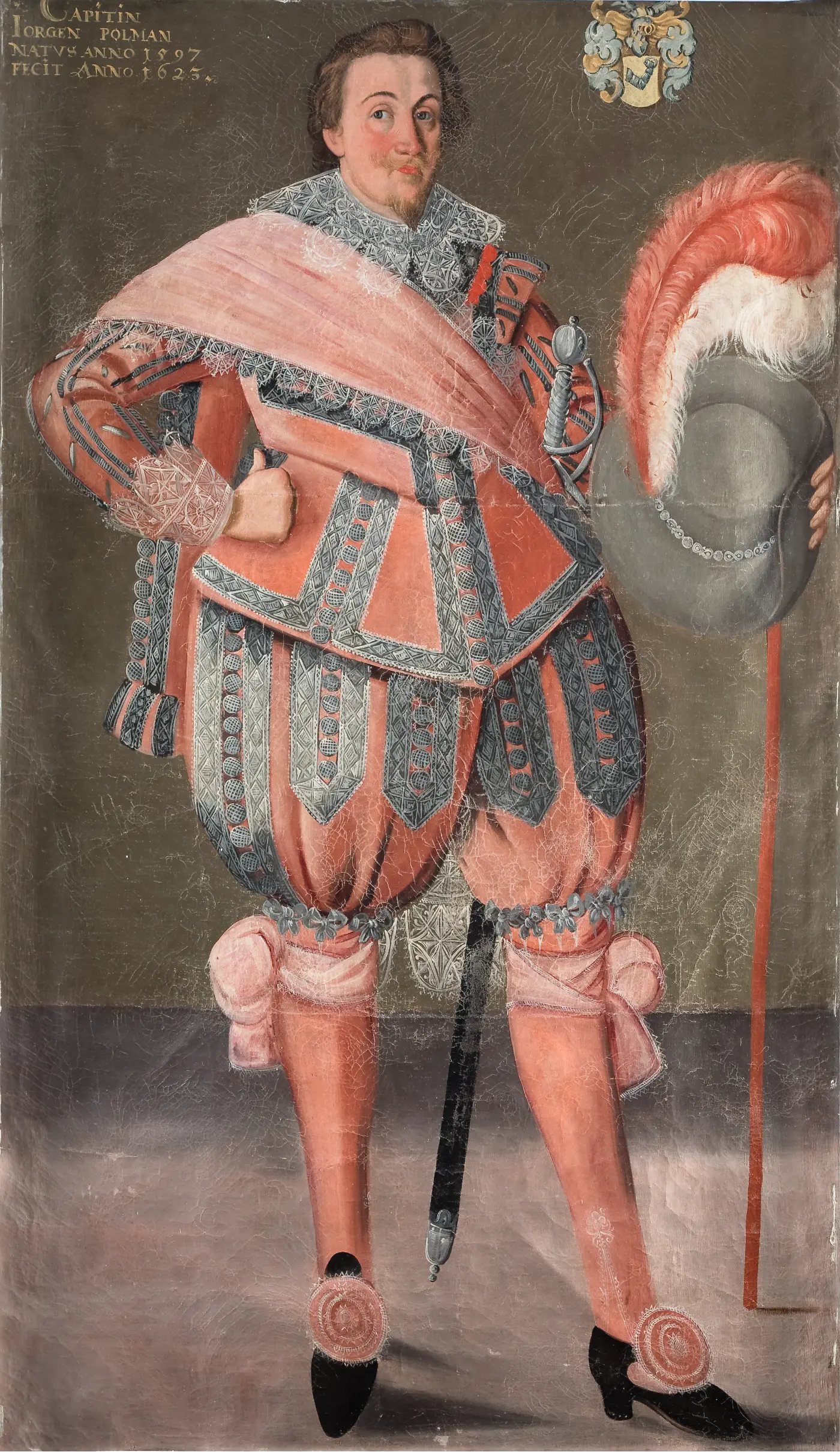
Looking more closely, the painting of Jöran (Fig. 5) is notable because it is complemented by a cossack (note his dangling right sleeve in the background of the painting) with an eight-piece peplum. At the time, it was fashionable to decorate the peplum with bows, but we do not see them here due to the orientation of the painting. However, the artist depicted the bows that tie Jöran Polman’s pants with red silk stockings.[[19]] This portrait is also significant because we can see the original Polman coat of arms in the upper right corner, depicting an arm holding a ring. Later, the family would enter Swedish nobility with the coat of arms depicting an arm holding a bullet or cannonball.
From 1620 to 1650, a trend emerged in which men’s hair grew longer, cascading down to their collar. Wavy and curly hair also became fashionable, particularly after 1630. Some men sported a long strand or two at the nape of their neck, which they could braid or embellish with a bow. This hairstyle was referred to as “cadenettes,” named after Marshal Cadenet. Additionally, some men grew a slightly twisted moustache or short goatee, as can be seen in Jöran’s portrait.[[20]]
Can you spot the Swede?
While the officers as painted share a striking familial resemblance, it was generally possible to spot the difference between officers of Scandinavian, German, and Dutch origin.[[21]] If you look closely enough at the paintings, small details provide clues to their ancestry.
First, each outfit was completed by a sword worn on a wide baldric with the officer holding a cane with a large sloutch hat. Among the Swedes, the hat was usually decorated with red and white ostrich feathers. For the Scotsman Patrick Ruthven (Fig. 6), the hat was adorned with a fox tail. Some officers opted for no embellishment.
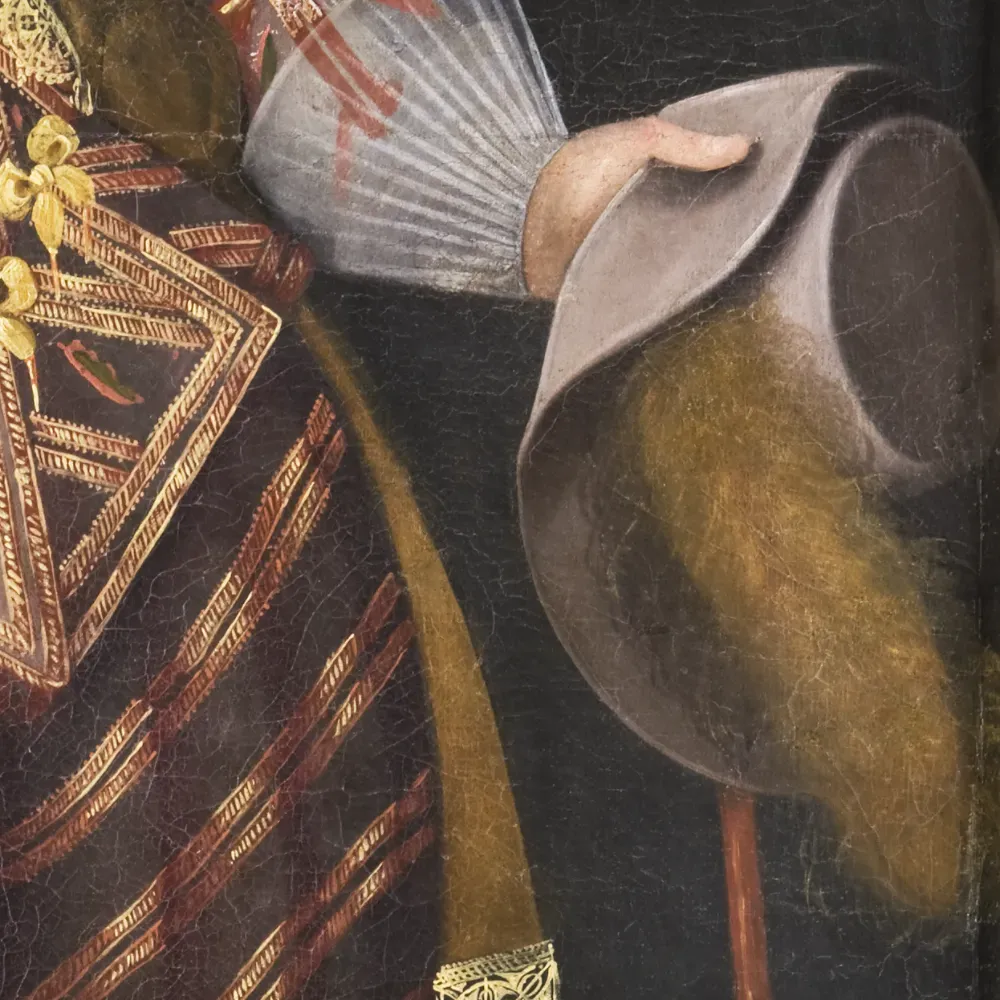
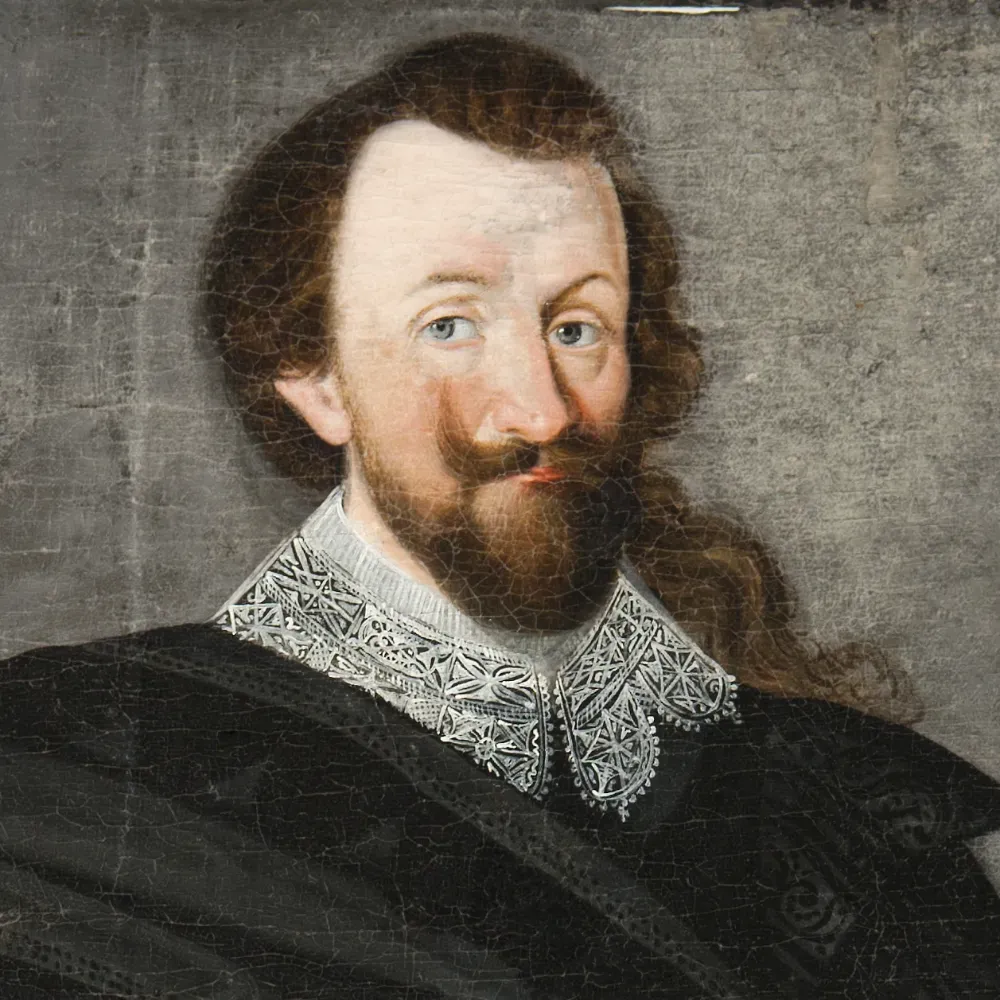

Fig 6: The fox tail in Patrick Ruthven's portrait; Fig 7: Herman Wrangel's bushy beard; Fig 8: The cream and grey uniform of Georg Günther Kräill von Bemeberg
Another way of distinguishing the officers is to examine their beards and moustahces: bushy for the Germans (Fig. 7), less so for the Scandinavians. Major Karl Kammel – from Scotland – is the only officer with no facial hair.
Finally, the most telling clue is their clothing. Swedish officers typically wore red, Germans black, and the Dutch are associated with cream, grey, and black (Fig. 8). Jöran, dressed in red in his portrait, suggests that he saw himself as Swedish despite his Baltic-German lineage. On the other hand, Herman Wrangel, another Baltic German is dressed in all black.
Kraill’s officer portraits are a valuable resource for historians, providing insights into the influences of Swedish fashion in the seventeenth century. Browse the entire collection of officer portraits at Europeana:

Georg Günther Kraill von Bemeberg portraits at Skoklosters slott
Support the Archive
Your contribution supports our ongoing research, preservation efforts, and storytelling. Help us bring this important cultural heritage to light.
Make a Contribution[[1]]: Rey, Daniel. “Model Officers.” FMR International December/January 2002, no. 113, 2002.
[[2]]: Bredberg, Eva. “Dräkt Och Pose i Porträtt – En Analys Av Posens Fiktion Och Dräktens Avbildning i Tre Porträtt Föreställande Herman Wrangel (1584–1643).” Dissertation, Södertörns högskola, 2017.
[[3]]: One portrait in the series was lost and replaced by a copy painted in the early 20th century, probably due to degradation of the original painting.
[[4]]: Bredberg, Eva. “Dräkt Och Pose i Porträtt – En Analys Av Posens Fiktion Och Dräktens Avbildning i Tre Porträtt Föreställande Herman Wrangel (1584–1643).” Dissertation, Södertörns högskola, 2017.
[[5]]: Rey, Daniel. “Model Officers.” FMR International December/January 2002, no. 113, 2002.
[[6]]: Rothlieb Carl F and Müller Carl. 1819. Beskrifning Öfver Skokloster. Stockholm: C. Deleen. http://catalog.hathitrust.org/api/volumes/oclc/84215359.html, 54-55.
[[7]]: De Young, Justine. 2018. “1620-1629 | Fashion History Timeline.” Fashion History Timeline. State University of New York. 2018. https://fashionhistory.fitnyc.edu/1620-1629/
[[8]]: “Kleidermode Zur Zeit Des Dreißigjährigen Krieges.” DeWiki. Accessed March 13, 2023. https://dewiki.de/Lexikon/Kleidermode_zur_Zeit_des_Drei%C3%9Figj%C3%A4hrigen_Krieges
[[9]]: Hillborg, Sofia. 2024. “Uthi Stora Landsplågor: 23 Psalmer Om Krig, Pest Och Hungersnöd I 1695 Års Psalmbok Och 1697 Års Koralpsalmbok.” Dissertation, Umeå University. https://urn.kb.se/resolve?urn=urn:nbn:se:umu:diva-225568.
[[10]]: “Kleidermode Zur Zeit Des Dreißigjährigen Krieges.” DeWiki. Accessed March 13, 2023. https://dewiki.de/Lexikon/Kleidermode_zur_Zeit_des_Drei%C3%9Figj%C3%A4hrigen_Krieges
[[11]]: Hillborg, Sofia. 2024. “Uthi Stora Landsplågor: 23 Psalmer Om Krig, Pest Och Hungersnöd I 1695 Års Psalmbok Och 1697 Års Koralpsalmbok.” Dissertation, Umeå University. https://urn.kb.se/resolve?urn=urn:nbn:se:umu:diva-225568.
[[12]]: Ibid.
[[13]]: An adaptation of an old German hymn and first appeared in Swedish in 1608. The text was changed for the 1695 hymnbook by Jacob Boëthius.
[[14]]: Ibid.
[[15]]: “Jöran Polman (1597 - 1636).” 2023. Polmanarkivet. April 18, 2023. https://polmanarkivet.com/joran-polman-1597-1648/.
[[16]]: De Young, Justine. 2018. “1620-1629 | Fashion History Timeline.” Fashion History Timeline. State University of New York. 2018. https://fashionhistory.fitnyc.edu/1620-1629/
[[17]]: Ibid.
[[18]]: Olegova, Fedosya. “3. Костюмы 1600 – 1640 Гг. в Музейных Коллекциях.” Хозяйка. Accessed March 13, 2023. http://premudrosti.in/index.php/kings-in-stockings/costumes-from-1600-to-1640/.
[[19]]: Ibid.
[[20]]: De Young, Justine. 2018. “1620-1629 | Fashion History Timeline.” Fashion History Timeline. State University of New York. 2018. https://fashionhistory.fitnyc.edu/1620-1629/
[[21]]: Rey, Daniel. “Model Officers.” FMR International December/January 2002, no. 113, 2002.

